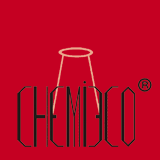
|
|
| Question 1 |
I need a product which is added to the mortar/plaster in order to obtain waterproofness. |
| Answer 1 | Mortar becomes waterproof when 10-20% of the product ECO IMPREGNIR K (compared to the mass of binder – cement and/or lime) is added in the process of making. The quantity of water used while mixing mortar should be reduced by the amount of added product. |
Question 2 |
Walls are wet up to 1,5m. The house is old. |
Answer 2 |
The phenomenon of wet walls often appears in old houses and is known as capillary humidity from the foundation. Due to constant humidity from the foundation capillaries in the walls become increasingly bigger in time, and humidity from the foundation rises up the walls. Cutting capillary humidity from the foundation is done by the method of chemical injection, using the product ECO IMPREGNIR K. |
Question 3 |
Mortar in the lower part of the object is crumbling and disintegrating. |
Answer 3 |
Mortar on the outer side of the object can crumble and disintegrate because of rain, which wets that part of the facade the most, or because of humidity coming from the foundation. Disintegration of mortar on the inner side points out to the problem of capillary humidity from the foundation or penetration of water through the walls. Mortar on the outer side, which disintegrated due to the rain, should be replaced with the new one. In order to obtain waterproofness 10-20% of the product ECO IMPREGNIR K and 5% of the product ECO POLYMER D (compared to the mass of binder) is added to mortar in the process of making. The problem of capillary humidity from the foundation is solved by the method of chemical injection of the product ECO IMPREGNIR K. After the injection the damaged section is repaired by using waterproof mortar. Penetration of water through the walls is solved by the impregnation of outer walls with the products ECO IMPREGNIR K and/or ECO IMPREGNIR S. Mortar on the inner part of the object is replaced with a new one, if needed. Upon the completion of works, the conservation of the object with the products ECO IMPREGNIR K and ECO IMPREGNIR S. |
Question 4 |
Painted facade. A product for the protection of both the paint and mortar (under the paint) is needed. |
Answer 4 |
In order to obtain protection the facade must absorb a certain amount of a conservation product. A smaller part which is left on the surface represents protection for the facade paint, while the part which penetrates is protecting mortar. If this is the case, it is best shown by carrying out a protection test (the sample of protection) on the relevant part of facade. If the result is positive, the conservation products ECO IMPREGNIR K and ECO IMPREGNIR S protect both the paint on the facade and mortar. |
| Question 5 | Graffiti are written on white facade. |
| Answer 5 | It is possible to remove graffiti by using the cleaning products ECO RECEPT 01, ECO RECEPT 02 and water under the pressure of 120-140bar. It is sometimes necessary to perform mechanical cleaning using steel brush, spatula etc. Upon removing graffiti the paint can partially fall off, thus after cleaning it is necessary to repaint the facade. After cleaning, the protection of facade, or its most vulnerable part, with the product for anti-graffiti protection ECO IMPREGNIR A. |
| Question 6 | Mortar facade has cracks. We tried to paint it again, but there were no results. |
| Answer 6 |
Cracked facade is being repaired before repainting. Applying a smooth coat is not the solution because smooth coat becomes cracked fast and falls off. Cracks on the facade are slotted to the width of 4-5mm and coated with the binder made of the product ECO POLYMER D with the addition of 10% of cement. Slotted cracks are filled with mortar made with addition of 5% of the product ECO POLYMER D (compared to the mass of binder). Then the facade is painted, and after drying of the paint conserved with the product ECO IMPREGNIR S. |
| Question 7 | Old mortar on the facade is crumbling. Can it be somehow protected without breaking? |
| Answer 7 | First, it is necessary to strengthen (consolidate) old mortar by using the consolidation product ECO CONSOLID M. After consolidation mortar is protected (conserved) with the products ECO IMPREGNIR K and ECO IMPREGNIR S. |
| Question 8 | Paint is being washed off from the facade. |
| Answer 8 | If the paint on the facade still looks good, facade needs to be conserved with the product ECO IMPREGNIR S. Otherwise, the facade is painted again, and then conserved with the aforementioned product. |
| Question 9 | Facade is located in a busy area and gets dirty a lot. Dirt is removed with difficulty. |
| Answer 9 | Conservation of the facade solves the problem of dirt and expensive maintenance. First, the facade is washed with the cleaning and washing products ECO RECEPT 01, ECO RECEPT 02 and water under pressure. Clean and dry facade is conserved using the protection products ECO IMPREGNIR K and/or ECO IMPREGNIR S.
ECO RECEPT 01mod and ECO RECEPT 02mod are used for regular/occasional facade maintenance.
|
| Question 10 | Last year, the facade on the new object was conserved with foreign products. After the winter was over I noticed that in many places protection was not the same as it used to be. I need more durable protection. |
| Answer 10 | Attestations for our protection products, provided by competent institutions, show that conserved construction material doesn’t age. According to our previous knowledge, our protection for the facades lasts more than ten (10) years. |

Search |
Recently viewed pages |